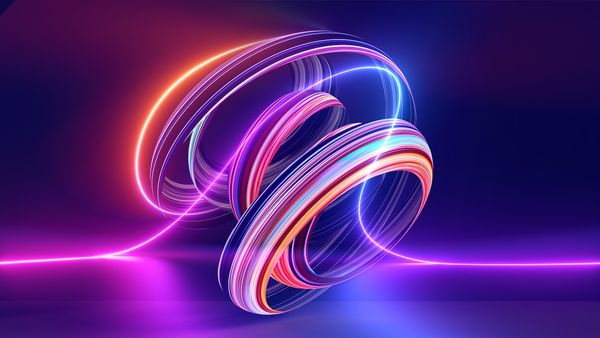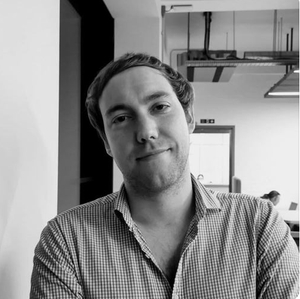Scientists could make blazing-fast 6G using curving light rays
Researchers have discovered a way to curve data-carrying terahertz signals around obstacles, paving the way for ultrafast 6G.

The future of cellular data transfer could lie in "curving" light beams midair to deliver 6G wireless networks with blazing-fast speeds — bypassing the need for line of sight between transmitter and receivers.
In a new study published March 30 in the journal Nature's Communications Engineering, researchers explained how they developed a transmitter that can dynamically adjust the waves needed to support future 6G signals.
The most advanced cellular communications standard is 5G. Expected to be thousands of times faster, 6G will begin rolling out in 2030, according to the trade body GSMA. Unlike 5G, which mostly operates in bands under 6 gigahertz (GHz) in the electromagnetic spectrum, 6G is expected to operate in sub-terahertz (THz) between 100 GHz and 300 GHz, and THz bands — just below infrared. The closer this radiation is to visible light, the more prone the signals are to be blocked by physical objects. A major challenge with high-frequency 5G and future 6G is that signals need a direct line of sight between a transmitter and receiver.
Related: Distorted crystals use 'pseudogravity' to bend light like black holes do
But in the experiments, the scientists showed that you can effectively "curve" high-frequency signals around obstacles such as buildings.
"This is the world's first curved data link, a critical milestone in realizing the 6G vision of high data rate and high reliability," said Edward Knightly, co-author of the study and professor of electrical and computer engineering at Rice University, in a statement.
The photons, or light particles, that make up the THz radiation in this region of the electromagnetic spectrum generally travel in straight lines unless space and time are warped by massive gravitational forces — the kind that black holes exert. But the researchers found that self-accelerating beams of light — first demonstrated in research from 2007 — form special configurations of electromagnetic waves that can bend or curve to one side as they move through space.
Get the Space.com Newsletter
Breaking space news, the latest updates on rocket launches, skywatching events and more!
By designing transmitters with patterns that manipulate the strength, intensity and timing of the data-carrying signals, the researchers made waves that worked together to create a signal that remained intact even if its route to a receiver was partially blocked. They found that a light beam can be formed that adjusts to any objects in its way by shuffling data to an unblocked pattern. So while the photons still travel in a straight line, the THz signal effectively bends around an object.
Bending toward a 6G future
While bending light without the power of a black hole isn't new research, what's significant about this study is it could make 6G networks a practical reality.
5G millimeter wave (mmWave) currently offers the fastest network bandwidth by occupying the higher 5G radio frequencies between 24GHz and 100GHz of the electromagnetic spectrum to deliver theoretical maximum download speeds of 10 to 50 gigabits (billions of bits) per second. THz rays sit above mmWave in a frequency between 100 GHz and 10,000 GHz (10 THz), which is needed to deliver data transfer speeds of one terabit per second — nearly 5,000 times faster than average U.S. 5G speeds.
"We want more data per second," Daniel Mittleman, a professor at Brown's School of Engineering, said in a statement. "If you want to do that, you need more bandwidth, and that bandwidth simply doesn't exist using conventional frequency bands."
But due to the high frequencies they operate in, both 5G mmWave and future 6G signals need a direct line of sight between a transmitter and receiver. But by practically delivering a signal over a curved trajectory, future 6G networks wouldn't need buildings to be covered in receivers and transmitters.
However, a receiver needs to be within the near-field range of the transmitter for signal bending to work. When using high-frequency THz rays, this means some 33 feet (10 meters) apart, which is no good for city-wide 6G but could be practical for next-generation Wi-Fi networks.
"One of the key questions that everybody asks us is how much can you curve and how far away," Mittleman said. "We've done rough estimations of these things, but we haven't really quantified it yet, so we hope to map it out."
While curving THz signals holds a lot of promise for future 6G networks, the use of THz spectrum is still in its infancy. With this study, the scientists said we have gotten a step closer to realizing cellular wireless networks with unparalleled speeds.
Join our Space Forums to keep talking space on the latest missions, night sky and more! And if you have a news tip, correction or comment, let us know at: community@space.com.
Roland Moore-Colyer is a freelance writer for Live Science and managing editor at consumer tech publication TechRadar, running the Mobile Computing vertical. When he’s not writing about smartphones and tablets, he taps into more than a decade’s worth of writing experience to pen articles about everything from laptops and smartwatches, to games, cars, streaming shows and more. For Live Science, Roland focuses on electric vehicles (EVs) and charging technology, the intersection of artificial intelligence (AI) and society, the advancement of mixed reality technology and its real-world use.
Roland’s journalism experience stems from a beginning in business to business technology, moving through to covering ‘prosumer’ technology and innovations, to a current specialism in consumer technology, working for one of the US’ largest tech sites, Tom’s Guide, before moving to TechRadar. Over the years, he’s covered stories ranging from major cyber attacks on critical infrastructure to hugely powerful gaming computers, while also digging into the evolution of AI, semiconductors, autonomous driving and more. When not writing and editing, Roland enjoys many of the food and drink trappings of London, much to the chagrin of his waistline.












